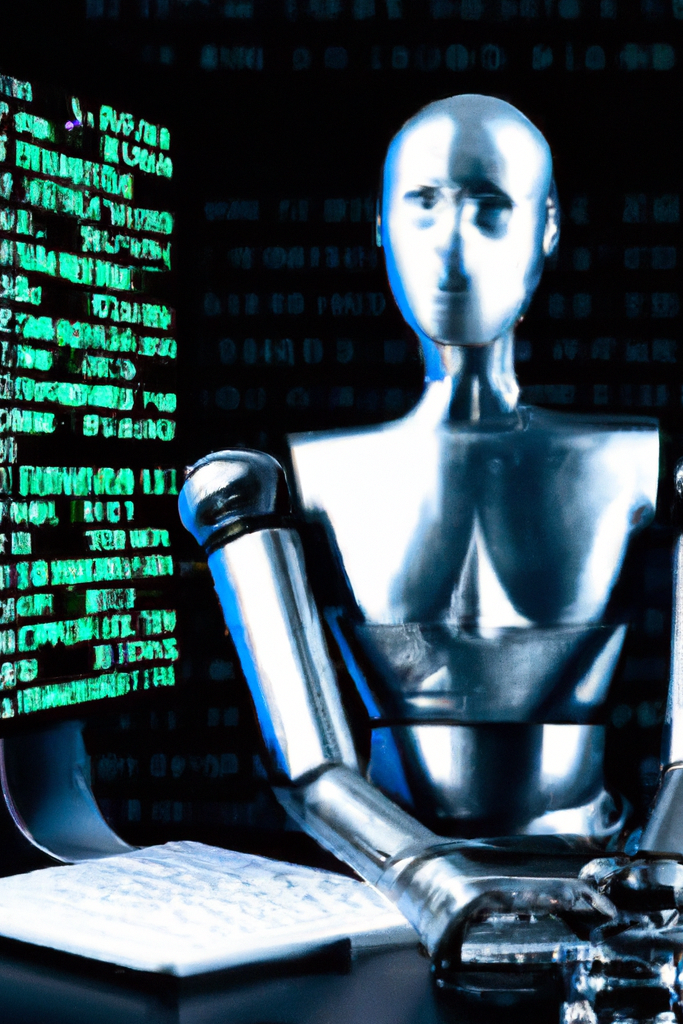Many have claimed we are on the brink of singularity, a moment in human history where technological development becomes so advanced it surpasses human intelligence, leading to rapid technological growth and potentially unforeseeable changes to human civilization. We are seeing unprecedented advances in AI that are being perceived by many as beyond human understanding. These advancements have captured the imagination of millions around the globe, both with fear and awe.

These innovations have already disrupted the way we are thinking, often mingling and even halting current projects and business processes, just to understand the possibilities that are coming out of AI and large language models such as ChatGPT, and how one can take advantage of them. There is definitely a feeling of FOMO. A fear that is well known in the crypto and web3 communities.
The web3 industry has dived deep into the possibilities of AI, with everyone eager to seek new paths to embed AI into the very fabric of crypto, recognizing the value of AI as a catalyst for change and eager to tap into its transformative capabilities.
Watching the discussion unfold, I have come to think of the ways these two industries seem to integrate. Of course, my starting point is from someone from the Web3 industry, looking at the potential of AI. Possibly, if it were the other way around, the perspective would be different. But from this standpoint, I have come to think about the intricate connections between AI and crypto under three key pillars:

1. Building Crypto with AI
What we can see under this pillar is the integration of AI solutions into the tech stack of crypto products. The major shift occurring from this pillar is the increase in productivity by leveraging existing AI solutions, from integrating conversational bots for educational purposes, customer support and community management, to automated code generation and programming. In this time where science-fiction seems to come to live, this might seem limited, but if we take a step back, it is actually a huge lever, given the scarcity of human capital in the industry. By leveraging AI algorithms and machine learning, crypto can become more intelligent, adaptable, and efficient, leading to a more dynamic and robust ecosystem.
AI-Assisted Development
One of the major use cases that have emerged with the launch of LLMs is to integrate them to programming and software development in general. This is also being applied in the Web3 industry. But, apart from this general use case, there are some specific use cases emerging, including:
- GPT-based smart-contract code generation;
- AI-driven UX optimization for dApps;
- AI-powered security and smart-contract audits.
Automation in Crypto
Here we are talking about automating processes in crypto. Bots have a long history in the industry, from trading to apeing tokens and airdrop-farming. But with the new advancements, the frontier has expanded. Particularly, we are witnessing:
- An increase in AI-enabled trading bots (both for CEX and DEXes);
- AI-based price prediction and market analysis;
- Automated and intelligent AML and KYC compliance.
Exploring New Frontiers
We have only started scratching the surface of the possibilities of building with AI. Several other use cases are expected to come. Some areas to keep an eye on include:
- DeFi, both for risk and asset management;
- AI-driven real-time identification of potential blockchain attacks;
- Sentiment analysis for market trends and investor behavior.

2. Decentralizing AI Infrastructure
The potential for AI to profoundly impact humanity is undeniable, reshaping how we work, create value, and interact with one another. The concern arises when we contemplate the concentration of this technological power in the hands of a few corporations capable of investing in proprietary AI systems. Enter crypto.
Its core principles of decentralization and incentivization hold the power to reshape the AI landscape. By decentralizing AI infrastructure, open and transparent systems can be promoted, encouraging greater access and replicability for individuals and organizations, just as crypto has done for money and finance since its inception.
Closed vs Open Systems
A handful of corporations are currently leading AI innovation within closed systems, including Microsoft, Google, Facebook, and Amazon. Their efforts and significant capital investments have been instrumental in advancing AI technology. However, “with great power comes great responsibility,” and it’s understandable that many are hesitant to entrust such power to any single corporation, even as OpenAI’s GPT models transition from open-source to more restricted access.
Blockchain projects, such as Ethereum, embody an open-source ethos that provides hope for the development of AI under a more transparent framework.
Capital Requirements of AI
Current AI models require massive financial and hardware investments, limiting access to only the largest tech companies, while the rest of the market (and humanity) can only access what these companies choose to offer. Crypto presents an alternative model through crowdfunding for AI projects, enabling shared governance and mutual benefits from future developments.
Crypto also facilitates the use of distributed computing platforms (like the Golem project), allowing users to rent out idle computing power for AI tasks.
Incentives Alignment
One of the groundbreaking innovations introduced by crypto is the possibility of transparent and immutable incentive alignment systems through token issuance, representing a stake in a project—be it financial, equipment-based, utility-focused, or otherwise. This layer enables the incentivization of those willing to invest (money, hardware, or effort) and those who want to use the system, completing the cycle of an open-system for capital-intensive processes.

3. Tokenizing Data
AI’s insatiable appetite for data has led to an exploitative model in which users of “free” products and services unwittingly become the product themselves, fueling profit-making machines in Web2 businesses. However, the advent of Web3 technologies offers the opportunity to disrupt this model and foster a more equitable data-sharing economy.
Data Sharing
Crypto enables data sharing to be incentivized in a transparent and secure manner. Pioneering projects like Ocean Protocol are leading the way in this transformation, facilitating the monetization of individuals’ datasets while ensuring anonymity and control over data usage.
By embracing Web3 business models, innovations can be fostered in various areas such as healthcare (sharing anonymized patient data for AI-driven diagnostics), supply-chain, and finance (like sharing anonymized transaction data for fraud detection).
Tokenization of Personal Data
Under the Web2 model, companies profited from user data to generate revenue, either directly or indirectly, by selling this information to third parties. This has led to significant privacy concerns worldwide. What if users could take a share of the revenue generated by the use of their personal data? Crypto-enabled data tokenization opens up this possibility. From sharing browsing habits and content preferences to personal fitness and health data, individuals can now actively participate in the value generated by their own information.
